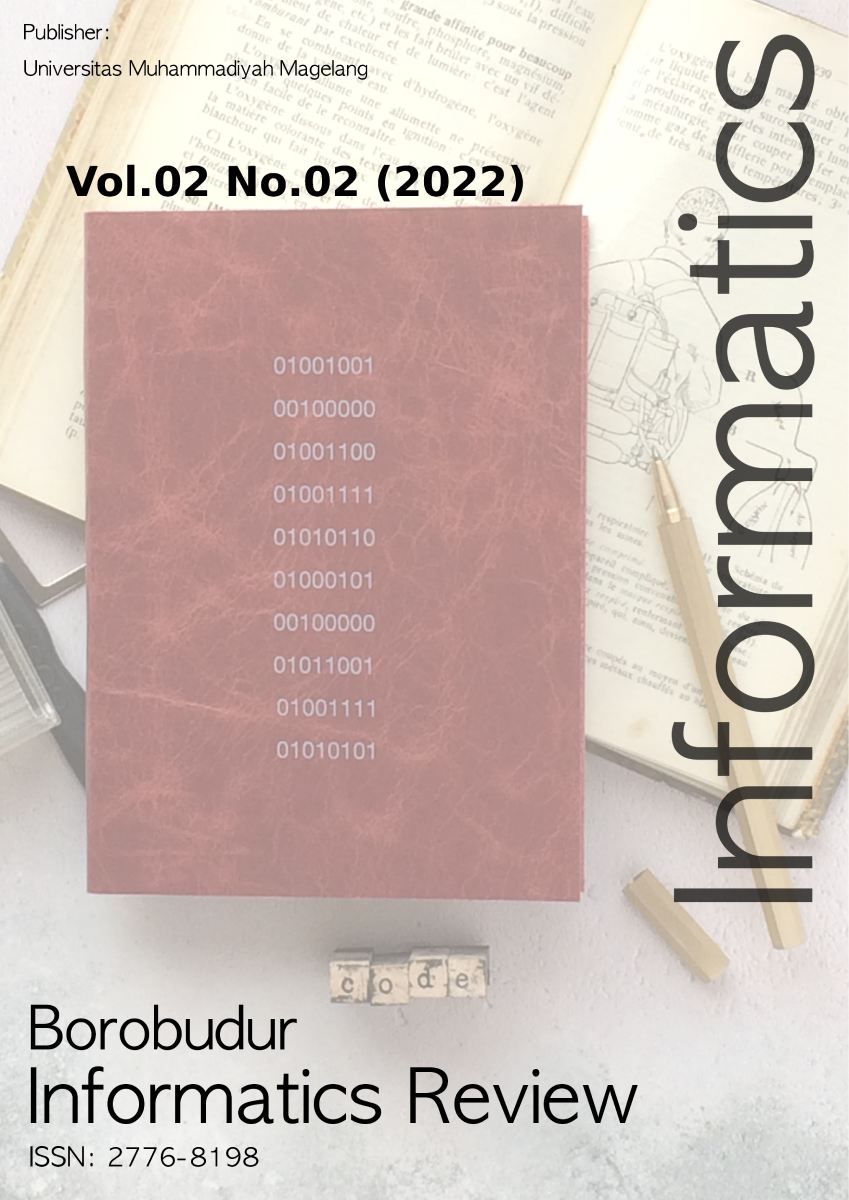Main Article Content
Abstract
Universitas Muhammadiyah Magelang provides an online learning service portal through an e-learning website MOCA. However, the low level of use of the MOCA website and the usability problems that usually arise in MOCA, indicate the need for usability testing. Usability testing is carried out to measure usability aspects, namely: effectiveness, efficiency, and user satisfaction. This study used a System Usability Scale questionnaire which was tested on 61 lecturers. This study aims to measure usability aspects according to the user's subjective assessment. The results of the study can describe the level of usability of MOCA from the user's point of view. the results of the MOCA usability test using the SUS method got a score of "64" and this figure is still below the average (below average) of 68. For acceptable ranges, it shows that the current MOCA is in a "marginal (high)" position, for the grade scale gets a “D” predicate, and for adjective ratings it can be said to be “OK” and that means the current MOCA quality score is acceptable but needs a lot of improvement. In addition, this study provides recommendations in the form of a prototype designed based on suggestions from respondents and then tested based on the heuristic aspects of the relevant journal. The prototype design that has been designed is tested on 5 respondents as evaluators. The results of the heuristic test obtained were "4.32" which means 5 respondents were "satisfied" with the prototype user interface design proposed by the researcher.
Keywords
Article Details
References
- Barrimi, M., Aalouane, R., Aarab, C., Hafidi, H., Baybay, H., Soughi, M., Tachfouti, N., Nejjari, C., Mernissi, F. Z., & Rammouz, I. (2013). Corticothérapie prolongée et troubles anxieux et dépressifs. Étude longitudinale sur 12 mois. L’Encéphale, 39(1), 59–65.
- Dewi, S. P., Dantes, G. R., & Indrawan, G. (2018). Evaluasi Usability Pada Aspek Satisfaction Menggunakan Teknik Kuesioner Pada Sistem Lms Program Keahlian Ganda. Jurnal Pendidikan Teknologi Dan Kejuruan, 15(1). https://doi.org/10.23887/jptk-undiksha.v15i1.13028
- Korompis, R. C. Y., Lengkong, V. P. K., & Walangitan, M. D. (2017). Pengaruh Sikap Kerja dan Kompetensi Terhadap Kinerja Karyawan Pada PT. Bank Negara Indonesia (Persero) Cabang Manado. Jurnal EMBA: Jurnal Riset Ekonomi, Manajemen, Bisnis Dan Akuntansi, 5(2).
- Oktaviani, N., & Fatmasari, F. (2020). Measuring User Perspectives on Website Conference Using System Usability Scale. Journal of Information Systems and Informatics, 2(2). https://doi.org/10.33557/journalisi.v2i2.76
- Ramadhan, D. W. (2019). Pengujian Usability Website Time Excelindo Menggunakan System Usability Scale (SUS)(Studi Kasus: Website Time Excelindo). JIPI (Jurnal Ilmiah Penelitian Dan Pembelajaran Informatika), 4(2), 139–147.
- Sadnyana, Darmawiguna, & Pradnyana. (2017). Evaluasi Usability Sistem Informasi Prakerin Pendidikan Teknik Informatika di Universitas Pendidikan Ganesha dengan Metode Usability Testing. Kumpulan Artikel Mahasiswa Pendidikan Teknik Informatika (KARMAPATI), 6(2). https://doi.org/10.23887/karmapati.v6i2.11688
- Salamah, I. (2019). Evaluasi Usability Website Polsri Dengan Menggunakan System Usability Scale. Jurnal Nasional Pendidikan Teknik Informatika: JANAPATI, 8(3), 176–183.
- Setiawardhani, R. T. (2013). Pembelajaran elektornik (e-learning) dan internet dalam rangka mengoptimalkan kreativitas belajar siswa. Jurnal Ilmiah Pendidikan Ekonomi Unswagati, 1(2).
- Setiawati, A., Rahim, A., & Kisbianty, D. (2018). Pengembangan dan Pengujian Aspek Usability pada Sistem Informasi Perpustakaan (Studi Kasus : STIKOM Dinamika Bangsa Jambi). Processor, 13(1).
- Taufiq, R., & Faisal, D. (2020). Perancangan User Interface Aplikasi Toko Online “Mormo Store” Berbasis Mobile Application. DEKAVE : Jurnal Desain Komunikasi Visual, 10(1). https://doi.org/10.24036/dekave.v10i1.108123
- Utami, A. S., & Kadafi, M. (2020). Analisis User Interface pada Aplikasi Sumeks. co Menggunakan Metode System Usability Scale (SUS). Prosiding Seminar Nasional Sains Dan Teknologi Terapan, 3(1), 193–200.
